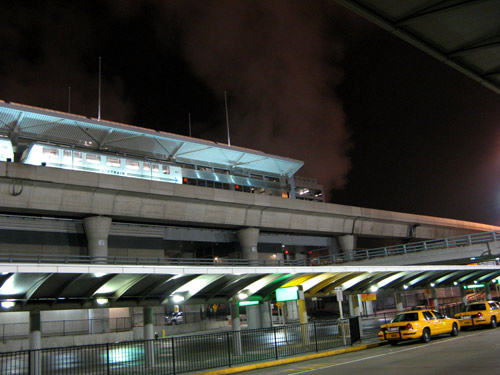Month: February, 2007
Forgotten New York
After my days driving through the American Southwest, it was nice to be reminded of why I love this city. Tonight, the Gotham Gazette Book Club was meeting to discuss Kevin Walsh’s recently published Forgotten New York: Views of a Lost Metropolis — a written tour of the city’s “landmarks, quiet places, and oddities.” The author was present to give a brief presentation, joined by Roberta Gratz, author of Cities Back from the Edge: New Life for Downtown, and a commissioner on the city’s Landmarks Preservation Commission.
Walsh was contracted to write the book, based on the popularity of his website “Forgotten NY,” a compendium of “forgotten, overlooked, ancient sights in New York City” that he writes and designs himself. Walsh first began researching and taking photographs for his site in 1998, launching it in 1999 after he had compiled enough information for the first few dozen pages. Since then, he has kept up a fairly regular updating schedule — a new page of research, accompanied by period and contemporary photographs and maps about every other week — with the new material coming either from tours or his own research, gathered over meandering walks through the far corners of the city. Forgotten NY is by no means Manhattan-centric; Walsh was born in Brooklyn, raised in Bay Ridge, and currently resides in Flushing. He is a stocky, unassuming figure, and is quick to admit that he has no formal training in archival research or history. His site, and the book, rose organically from his own passion. From its humble beginnings — the design was and remains purely utilitarian — the site has amassed a devoted following; Walsh and Forgotten NY have been featured in Salon and on Gothamist.
Walsh seems to promote a different kind of New York City tourism: one that values the city not for its well-known and looming landmarks, but for everything else… the ephemeral trivia and detritus of urban living.
The event was being held, appropriately enough, at the Jefferson Market Branch of the New York Public Library – a site steeped in city history. The ornate Victorian Gothic building and clocktower were designed by architects Frederick Clark Withers and Calvert Vaux (who assisted Frederick Law Olmsted in the design of Central Park) and has been a fixture of the West Village since the 1870s, serving at times, as the site of a marketplace, a fire tower and a courthouse. (The adjacent jail was replaced by the New York Women’s House of Detention, which was demolished in 1974 to make way for a serene community garden. The Jefferson Market Greening was one of my favorite spots in the neighborhood when I was living on West 12th Street, predating the nuptials of Miranda and Steve on Sex and the City.)
The building where we sat that night was the center of national attention in 1906, when Harry K. Thaw was tried in the courthouse for murdering prominent architect and socialite Stanford White on the roof of Madison Square Garden – tagged by the newspapers as the “Girl in the Red Velvet Swing” trial. The notorious case was the loose basis of (Bronx Science alum) E. L. Doctorow’s novel, Ragtime, which was later adapted into a stage musical and a film.
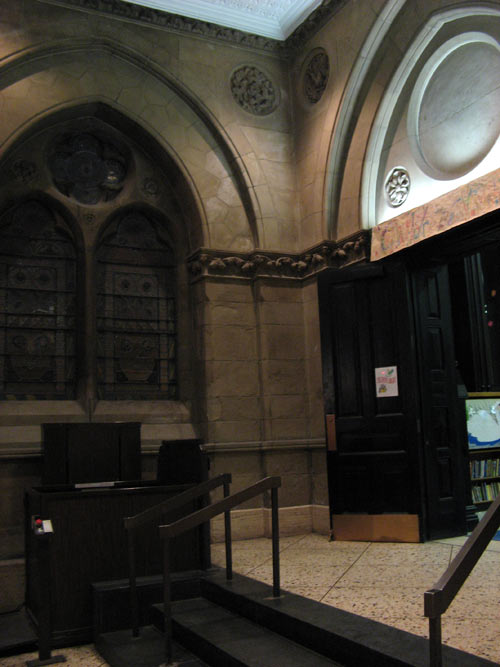
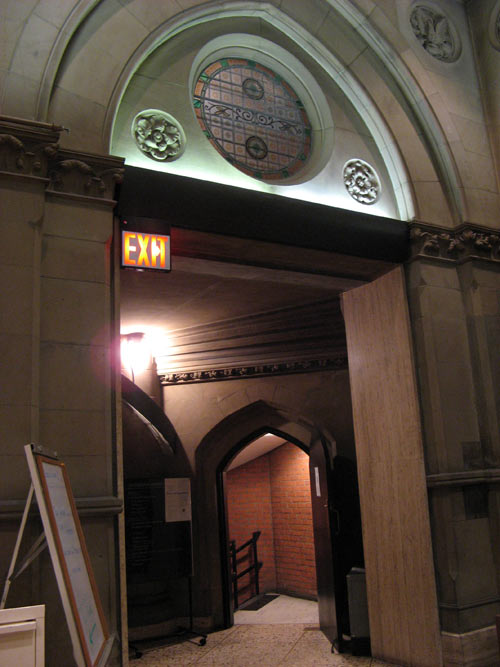
The Jefferson Market clocktower is a regular site on the annual openhousenewyork tour, where the public is invited to climb the 149 steps to the top for 360-degree views of Greenwich Village.
Afterwards, I met SYB a few blocks away at Peanut Butter and Co. on this, the last day to cash in our coupons for jars of peanut butter, which we’d collected at the Time Out “Back to School” festival in Union Square in September. Finally!
I got The Elvis, without the bacon, just like it’s served down in Graceland. I picked up my jar of “The Heat is On”: PB & Co’s “all natural peanut butter blended with fiery spices,” and was even comped my glass bottle of Diet Coke by the friendly cashier. It’s good to be back.
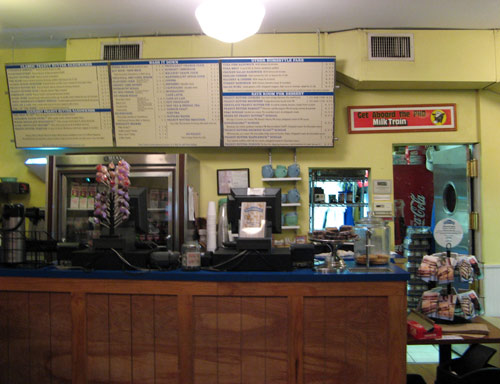
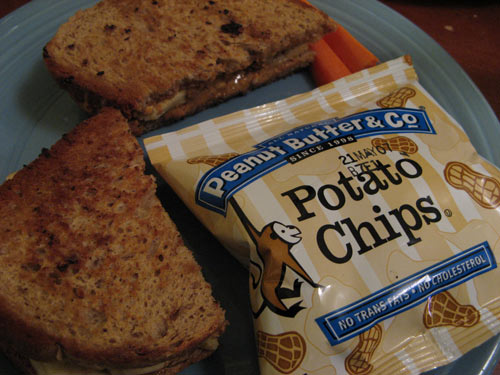
Get your kicks
Well if you ever plan to motor west
Just take my way, that’s the highway that’s the best
The famed U.S. Route 66, a.k.a. The Main Street of America, a.k.a The Mother Road, once ran between Chicago and Los Angeles, but was replaced largely by the more efficient Interstate Highway System during the 1960s and 70s, after it was decided that the route was no longer relevant. US 66 was officially decommissioned on June 27, 1985. In its decades of existence, the 2300-mile stretch of road became the subject of countless songs, films, books and legends. During the Dust Bowl of the 1930s, more than 200,000 people migrated west to California along the route, supporting the economies of the communities through which the road passed, and symbolizing the highway as the “road to opportunity.” Today, there are few traces remaining; large cross-country sections were absorbed into interstates and other stretches fell into disuse. Route 66 is still the main street of many towns, and several segments of the original road survive, and have been designated National Scenic Byway, now known as Historic Route 66.
In its heyday, Williams, Arizona was a Route 66 town; nowadays, it is one of those at the heart of the revival. The town was founded in 1876, and fifteen years later, the Santa Fe Railroad lay down 50 miles of track leading from the town to the Grand Canyon National Park, insuring Williams’ claim as Gateway to the Grand Canyon.
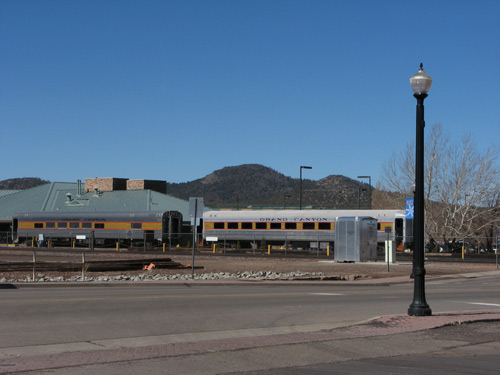
Downtown, souvenir shops offer every imaginable piece of Route 66 memorabilia: kitschy signs, coffee mugs, jewelry, shotglasses, and t-shirts. Vintage storefronts, cafes, galleries and streetlamps evoke some of the old nostalgia — most of which we were able to take in about half an hour.
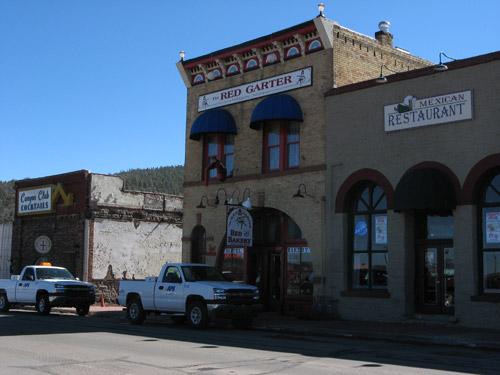
On to Flagstaff — another stop on the historic route, which we found somewhat less scenic. As we had been warned by the Grand Canyon guides during our check-out, Hwy. 89A to Sedona was closed that day due to area rock and mudslides. Roadblocks at (ironically-named) Slide Rock State Park prevented private vehicles from passing through, so we ended up bypassing the blocked-off area on the interstate, and doubling back on a different route to spend a few hours among the red rocks and vortices.
We lunched at the low-key Wildflower Bread Company, which CS and I discovered on our trip here last year. Fresh-baked breads, tasty salads and sandwiches, and unobstructed views of the colored mountains.
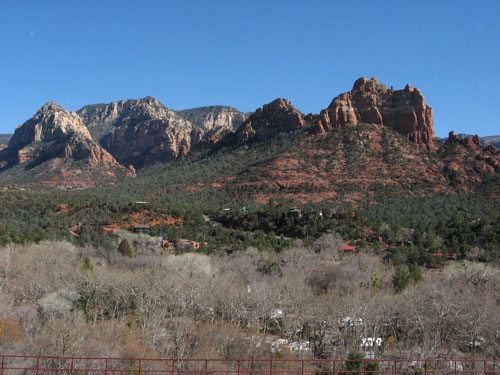
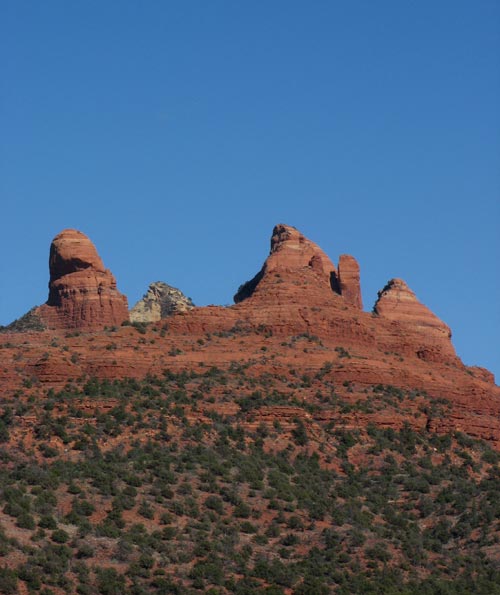
Back at the car, J and I tossed aside our heavy coats — warm sunshine at last! — and spent the rest of the day exploring the picturesque town. We must have popped into a dozen different shops and assorted “trading posts,” picking up strands of polished stones and other small souvenirs along the way… but no animal skulls.

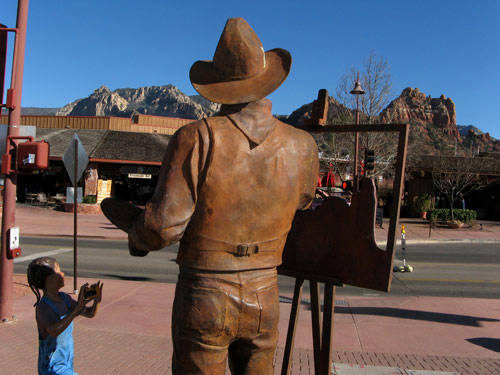
Search
Popular Tags
Categories
Archive
- July 2010
- July 2009
- January 2009
- November 2008
- September 2008
- August 2008
- July 2008
- June 2008
- May 2008
- April 2008
- March 2008
- February 2008
- January 2008
- December 2007
- November 2007
- October 2007
- September 2007
- August 2007
- July 2007
- June 2007
- May 2007
- April 2007
- March 2007
- February 2007
- January 2007
- December 2006
- November 2006
- October 2006
- September 2006
- August 2006
- July 2006
- June 2006
